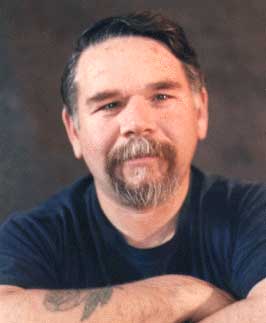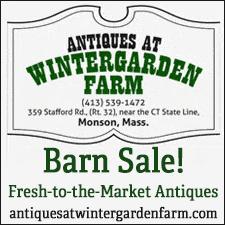Studying Golf Related Collectibles – Business of Doing Business – The Journal of Antiques and Collectibles – October 2006
By Ed Welch
I have been studying golf related antiques and collectibles for more than a year. I have compiled selling records from eBay and other online auctions. I have purchased auction catalogs with realized prices and I have kept records of the asking price of golf items for sale at large shows like Brimfield.
Many golf related collectibles are on the market today. Much of this stuff is low end and/or of a type of collectible that I call “purpose created.” For example, a hat or golf ball signed by Tiger Woods. As a professional dealer, I buy and sell the very best and the low-end stuff of any type of item I carry.
Much of the higher quality golf related items come from Scotland. On a recent trip to Edinburgh, I was fortunate enough to be introduced to a wholesale dealer in golf related memorabilia who has a stock of thousands of items ranging in value from expensive to cheap.
I have been dealing with wholesalers my entire career. I can tell within a very short time whether or not I will be able to do business with a particular wholesaler. I have a list of about 10 questions that I can work into a conversation that will give me a good idea if the wholesaler really understands my needs as a buyer, wants the additional business, and most important of all, is capable of finding enough merchandise to adequately supply a new buyer.
I spent several hours talking with this dealer discussing volume sales, pricing, shipping arrangements, and shipping costs. This dealer has an inventory that includes more than 6,000 golf clubs made before 1920. He also has several hundred antique and vintage golf balls and thousands of golf related collectibles. We spoke late into the evening and then arranged to continue our conversation the following afternoon.
When I returned for my second visit, I came with two notebooks filled with information on early golf collectibles. I also had a computer-generated spreadsheet detailing recent selling prices on early golf clubs, feather filled balls, hand hammered balls, gutta percha balls, and purpose created collectibles.
I made the following proposal – he would provide one secretary, my wife and I would return with a laptop computer and digital camera to catalog his entire collection of golf clubs. From this list, I would choose 1000 clubs as my initial purchase.
I also placed three golf clubs on his desk along with two golf balls and two purpose created collectibles. The total retail price for the seven items was slightly more than $6000. I told him that to prove that I was serious, I would buy the seven items today at the full retail price marked on each piece.
For nearly an hour, he studied my notes and spreadsheet. He referred to his computerized inventory turning the monitor at an angle that made it impossible for me to see. His first words to me were, “you are not a collector.” “You approach buying golf collectibles in a manner one would use to buy tee shirts, mutton, or ripe tomatoes. If I were to allow you to inventory my collection of golf clubs, you would know more about my collection than I do. You would buy the thousand best clubs leaving me with inventory greatly reduced in value.”
He went on to add, “The items you put on my desk are rare and impossible to replace at any price. This is the reason they are in my office and not out in my shop. I do have thousands of items that I would willingly sell but you are unlikely to buy such things unless I sell them cheaply. This is something that I am not wiling to do.” “My friend”, he went on to say, “We are driven by two different types of engines, mine is the need to process, yours is a drive for profit.” “We cannot have the type of business relationship you want.”
We spoke for another hour. As I got ready to leave, he put his hand on my shoulder and asked if I was aware of the English custom of never selling a gift. The only way the gift can be disposed of is by giving it to someone else.
I replied, “Yes,” and added that I had two such gifts at home given to me friends that I had meet in England. He reached into his pocket and then placed in my hand an early and very expensive golf ball. “Ed,” he said with a broad grin, “You are now a golf collector.”
Before I could protest such an expensive gift, he said, “Ed, I hope you succeed in becoming a dealer of golf collectibles. I believe that you will be good at it and turn up rare golf items. I cannot be your supplier but I can be one of your customers. Dealers like you need collectors like me.”
This person fits into a category of dealers that I call collector/dealers. Collector/dealers tend to make buying decisions driven by emotions. Such dealers often pay too much for items they buy. In my opinion, collector/dealers are partly responsible for today’s high cost of antiques and collectibles.
I am still in the process of deciding if I should add golf collectibles to the line of antiques that I carry. I have purchased most of the reference books I will need. Two of the best reference books were printed in small quantities. They are now nearly impossible to buy except at internet auctions and sell for hundreds of dollars each. One is a studious reference work on the development of the golf ball and the second deals with biographies of famous golf personalities.
I still have some work to do on recognizing fakes. I recently met a vender who sells a line of newly made golf clubs and balls using methods that were standard in the late 1800s. These clubs and balls are expertly hand made to original standards and are not cheap. They are intended to be used by individuals who want to play a few rounds of golf using antique equipment.
Less than honest venders buy some of this equipment and put it to use on driving ranges and golf camps. I few months of such use will quickly age the clubs and balls. The wear on the heads of clubs and on balls will look real. A driver used at a driving range for six months by inexperienced teenagers who “hack and whack” at balls will look as if it is old and has been used for many years.
Should I decide to add golf items to my inventory, I will buy many fake clubs and balls. I will disassemble the fake clubs to see what I can discover and I will saw the fake balls in half to see how they are made.
To date, I have spent around a thousand dollars in my quest to learn about golf antiques. Most of the money was spent on reference materials. I also bought a small collection of golf balls that are in rough condition. I bought them as possible fakes but now believe some are real. I bought three golf clubs that were sold to me as guaranteed antiques. I now know that they are fakes, and not very good ones. I will see this dealer next week at Brimfield. I may or may not tell him what I have learned about the clubs he sold to me. I do not want my money back. The clubs are worth the price I paid for the lesson learned. In addition, he deals in a wide range of sports collectibles and may not have known that the clubs are fake.
As this article goes to press, I am still undecided about a venture into golf collectibles. I tend to be leaning towards specializing only in golf balls. By focusing on balls, I will have less to learn and therefore can gain expertise in less time and with less money spent on research. In addition, a large selection of antique and purpose made collectible golf balls will fit in a small suitcase. At my age, dealing in something light and easy to carry is a plus.
1 thoughts on “Studying Golf-Related Collectibles”
Leave a Reply
You must be logged in to post a comment.







Your picture #4 is exactly like a friend of mine used to make – he called it a “feathery?”. He would take them to golf tournaments in the midwest and try to get close to the pros by giving them one of his featheries. We have found them at antique shows priced up to $60. This gentleman is one of the nicest fellows around, but unfortunately is getting in the far stages of dimentia. He asked me (I do estate tag sales) to pick him up more feather pillows, which I did. When I asked him how the new batch of featheries were coming along, he replied that he just can’t remember how he made them. He had studied exactly they used to be made and made his exactly like the old ones. Now he rembers that he soaked the feathers, but that’s about all he remembers.
So when you find a golf ball that looks exactly like #4, it is probably from Muscatine, IA and made within the last 12 years.
We have a collector here in Muscatine, however, I have not shown him our featheries. I may do that just to see if he can detect a reproduction.